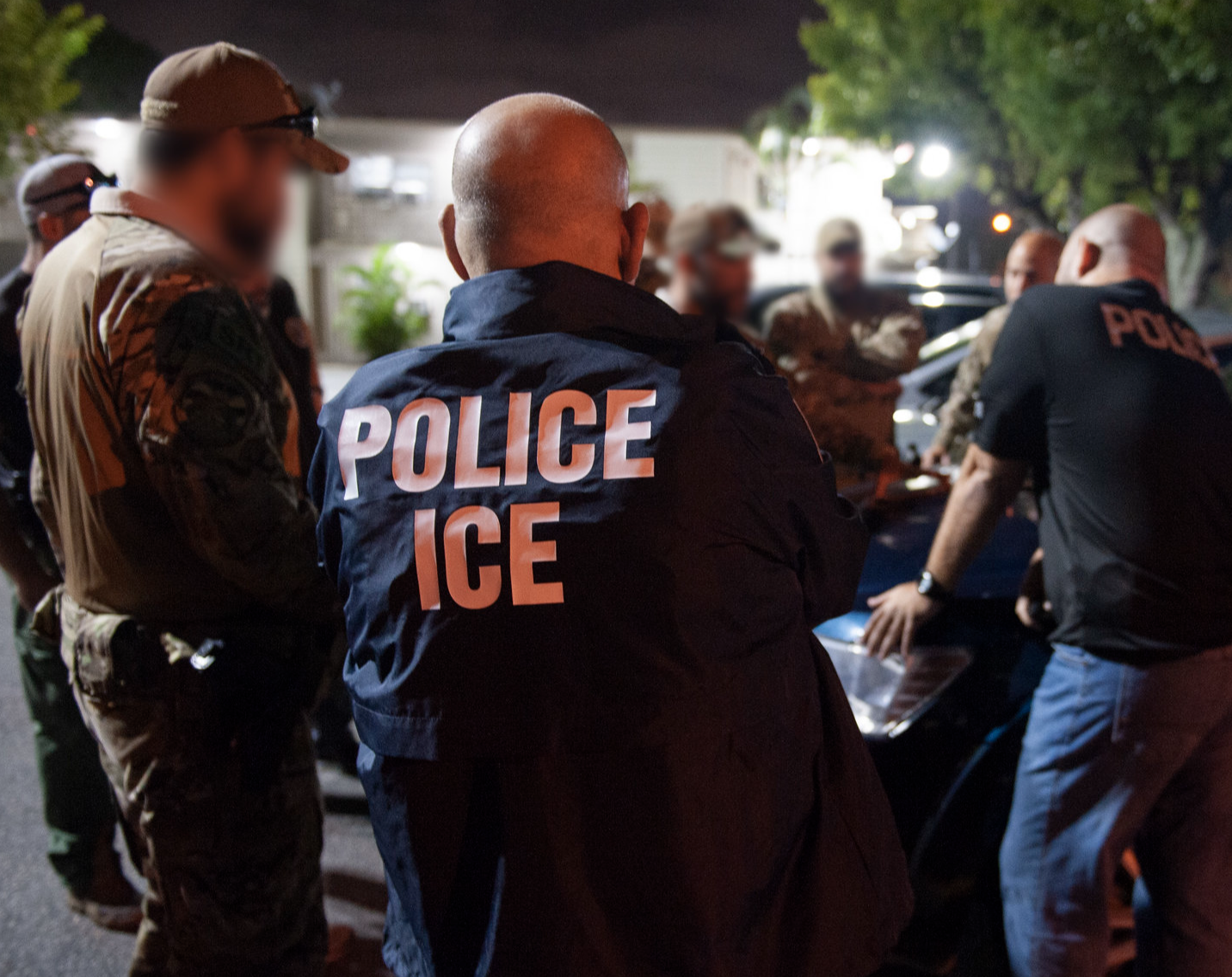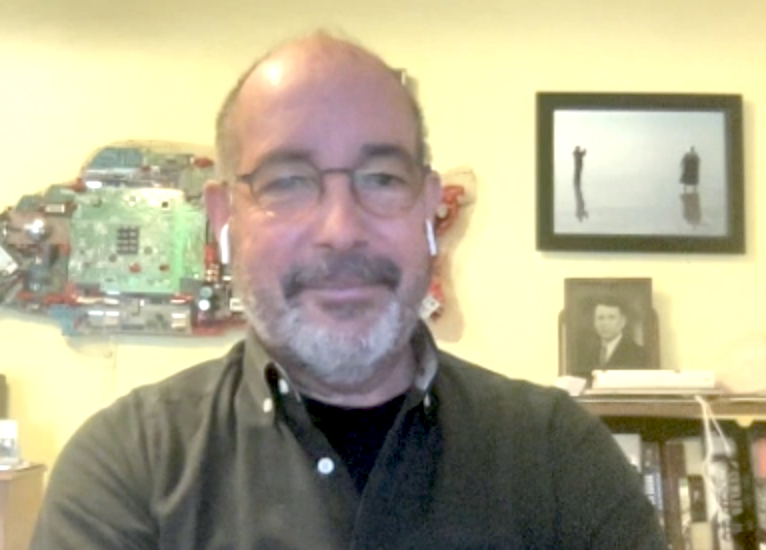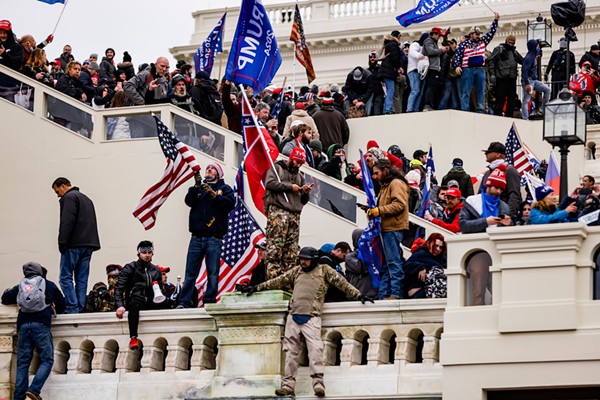By Jeffrey Anderson
For ticklethewire.com
WASHINGTON — For nearly six years now the death of congenial and free-smiling Baltimore federal prosecutor Jonathan Luna has remained a mystery. Theories still range from suicide, to accident, to murder by an informant, and yes, even by a federal agent, as an author of a book on Luna suggests.
One constant has been the refusal of federal authorities to comment much beyond the pat response, insisting that Luna, who was found face down on Dec. 4, 2003, in a shallow creek in Lancaster County, Pa., with 36 shallow stabs and pricks, is still the subject of an “open investigation.”
A recent letter from the Lancaster County District Attorney’s Office has breathed new life into that assertion. Yet it also has added tantalizing detail beyond what the feds will confirm, and raises questions about what is really going on with the so-called Luna investigation.
The letter, written by Lancaster County Assistant District Attorney Susan E. Moyer on May 6, is addressed to William Keisling, author of the conspiracy-minded tome “The Midnight Ride of Jonathan Luna,” and explains why the office can’t provide Keisling with the Luna autopsy results.
“Conversations with the Chief of the Violent Crimes Unit for the United States Attorney’s Office for the Eastern District of Pennsylvania have revealed that the Luna investigation is an open and ongoing federal criminal investigation in which the leads are continuously being developed and additionally that the Luna case is part of an open federal grand jury investigation.”
Assistant U.S. Attorney David Webb, the Philadelphia-based chief of the violent crimes unit whom Moyer is referring to, says his office’s policy is to not comment on such matters. And the existence of a federal grand jury investigation is supposed to be secret.
The questions are: Is the Lancaster County D.A.’s office interpreting the conversation with the feds correctly when it says “leads are continuously being developed” in a federal grand jury investigation? And was the U.S. Attorney’s Office really being forthright? Some skeptics wonder.
The Luna case continues to be one of federal law enforcement’s more painful and confounding mysteries. Investigators hate to see cases go unsolved. They doubly hate it when it involves one of their own.
But to add to the confusion, the D.A.’s statement flies in the face of a different reality acknowledged by Luna’s former colleagues in the U.S. Attorney’s Office in Baltimore: Despite a ruling by the Lancaster County Coroner that Luna’s death was a homicide, for years now they say there has been no active federal investigation; and classifying it as “open” amounts to a legal fiction that simply preserves sensitive aspects of the case and respects the memory of Luna and the feelings of his family, particularly the father, Paul Luna, who insists that his son was murdered. He’s not buying the theory the FBI in Baltimore has long subscribed to that Jonathan Luna committed suicide.
“That’s not true,” Luna’s father told the now-defunct Baltimore Examiner eight months ago. “He was killed.”
Furthermore, although there is no consensus – and the evidence defies a conclusive theory – there is a grudging acceptance among those who knew Luna that he most likely killed himself – either intentionally or unintentionally.
“It’s tragic, and sad, and we may never know what really happened, but the reality is there are no credible leads to suggest he was murdered,” says a veteran high-ranking prosecutor in the U.S. Attorney’s Office in Baltimore, who says there is no indication that leads are being developed “continuously” or otherwise. “But closing the case would be a slap in the face to his family and to those who feel strongly to the contrary. So the decision, as I understand it, is to leave the case open and do nothing.”
“Like everyone else we all thought it had to be murder at first, but now it appears more likely he committed suicide,” says another top prosecutor in the office, pointing to Luna’s troubled personal and professional life. “He was suspected of theft, he had run up credit card bills, there was some other shady stuff, and eventually even his friends reluctantly concluded it was suicide. Some resist that conclusion, others resist talking openly out of respect for his family, but the reality is the case has been open but inactive for a long time.”
A former federal prosecutor and colleague of Luna who now practices criminal defense law in Baltimore, agrees.
“I’m not sure closure was ever reached, as the investigation was removed from the Baltimore office and transferred to Philadelphia [to the U.S. Attorney’s Office for the Eastern District of Pennsylvania]. Our understanding was that the investigation stopped short of an official announcement. They can legitimately say it’s open so if new information arises they can look at it. But if it’s true that his death was self-inflicted, then they did not want any more public pronouncements. It’s a law enforcement respect issue at this point.”
The 38-year-old prosecutor, a bootstrap kid from the Bronx, disappeared on the night of December 3, 2003. He had been at the office late in downtown Baltimore, working out a plea agreement in a major heroin trafficking case and was expected to return shortly before midnight to his two-story townhouse on a cul-de-sac in Howard County, outside of Baltimore, where he lived with his wife Angela, a physician, and their two young children.
Instead, authorities believe he drove north on Interstate 95; crossed into Delaware; made a cash withdrawal south of Philadelphia; stopped for gas in King of Prussia, northwest of Philly; continued west on the Pennsylvania Turnpike and exited south of Reading about 3:30 a.m., according to a toll ticket. In the morning, an employee of a well-drilling company in Brecknock Township, in the middle of Pennsylvania Dutch country, about 100 miles north of Luna’s office, spotted Luna’s 1999 silver Honda Accord in a ditch with the lights on and the engine running.
The car was smeared with blood and Luna, still in a suit, overcoat and tie, with his electronic security pass around his neck, lay face down in the shallow creek, stabbed and pricked 36 times with a knife.
A murder investigation ensued, yet the evidence failed to lead investigators to a likely suspect in Luna’s late night, three-state odyssey, despite the Lancaster County Coroner’s ruling, which concluded that it was a homicide by multiple traumatic wounds and drowning.
Disparate pieces of a vexing puzzle began to surface, and the investigation bogged down with distractions and red herrings. Incompetence and overzealousness may have played a role. Luna’s reputation was tarnished.
Jayne Miller, chief investigative reporter for WBAL in Baltimore, recalls an early theory was that someone in Luna’s drug case had something to do with his death.
“Those guys aren’t going to go to Amish country,” Miller says. “That theory didn’t go anywhere.”
Meantime, it became apparent that Luna, known as a doting father, whose looks were likened to Tiger Woods, had hit a bumpy patch in his life. His boss, U.S. Attorney Thomas DiBiagio, who Luna disliked and privately criticized, was moving to fire him. (DiBiagio did not return a call and an email seeking comment.)
Luna also was having financial trouble, and may have been a suspect in the disappearance of $36,000 that was evidence in a bank robbery case he had handled. A colleague had taken a polygraph and Luna was scheduled to take one in a few days, but instead he was found dead.
News reports stated that Luna had credit card debt and multiple credit cards, some of which his wife did not know about. He had withdrawn a loan application shortly after the bank robbery money went missing.
Other reports portrayed him as living a secret life, in search of sexual encounters. Luna’s widow Dr. Angela Hopkins-Luna, an obstetrician and gynecologist in suburban Baltimore, declined to comment for this article.
Luna’s zig-zag path up to the final destination in Pennsylvania suggests he did not end up there against his will, says Miller. In other words, if he were being held against his will, the abductor or abductors would have likely taken a more direct route.
“He took a bizarre route,” Miller says of his meandering trip, northeast to Philadelphia, then west to Lancaster County.
In time, when it seemed as if investigators were stumped, the suicide theory seemed to surface.
The theory surfaced in the media after Pennsylvania State Police and the Lancaster County Coroner cleared the crime scene, and the FBI claimed to have found evidence not previously discovered: a penknife that matched Luna’s stab wounds.
That discovery, leaked to the media, tended to fuel speculation that Luna’s wounds may have been self-inflicted, and that either he intended to kill himself and make it look like a homicide, or that he intended to stage a non-fatal attack and inadvertently severed a major artery and bled to death by the side of the road. Missing were any defensive wounds on his arms or hands.
Either way, one theory was that Luna created this bizarre attack to put off the scheduled polygraph test involving the missing $36,000 from the bank robbery case – perhaps with the thought the impending exam would be delayed and perhaps, eventually forgotten.
The theory that Luna’s wounds were self-inflicted had the effect of placing the young prosecutor under the microscope.
At one point, the FBI in Baltimore, which remains the lead investigative agency, suspected Luna of having an affair with one of its agents. No evidence surfaced to suggest there was anything to that. But that hunch resulted in a diversion that created a whole mess unto itself.
The FBI searched the agent’s computer without her consent, violating her privacy and civil rights, and causing a storm. The Justice Department’s Office of the Inspector General found that the FBI acted inappropriately. U.S. Senators Patrick Leahy and Arlen Specter, leaders of the Senate Judiciary Committee, sought records in the matter and were rebuffed by the Justice Department. Luna’s death remained a mystery.
Says another veteran federal prosecutor in the Baltimore office: “The FBI screwed up. The Lancaster County Coroner screwed up by missing the penknife. Those factors changed the whole tenor of the investigation. Now the FBI won’t close the case because they don’t want to deal with [public records] requests. It’s an embarrassment to the bureau.”
To get a sense of just how no one really wants to deal with this case, all you have to do is call the Justice Department and the FBI.
“We’re not commenting on the Luna case any longer,” says Richard Wolf, an FBI spokesman in Baltimore. “That’s coming from above.”
He directed questions to the Department of Justice. Ian McCaleb, a spokesman for the Justice Department’s criminal division responded by saying: “I don’t know why you are being directed here,” before referring a call to FBI headquarters in Washington.
At headquarters, FBI spokesman Bill Carter said: “I’d have to defer to the Baltimore field office.”
Interestingly, author William Keisling, the person responsible for the most bizarre theory of Luna’s death is also responsible for the recent assertion that there is a federal grand jury and that leads are being “continuously developed.”
In 2005, Keisling authored “The Midnight Ride of Jonathan Luna.” The book, based largely on court documents from the drug case Luna was handling, points to a convoluted conspiracy in which an FBI informant was out of control, money from a bank robbery case was missing and Luna posed a threat to someone at the bureau who might have had a motive to kill him.
Keisling doesn’t identify a would-be perpetrator, but he hasn’t given up the ghost, either.
This past April 22, Keisling filed a request with the Lancaster County District Attorney under Pennsylvania’s Right to Know Law. He sought copies of all autopsies and forensic records related to Luna’s death. Assistant District Attorney Susan Moyer denied the request in writing on May 6, citing an ongoing federal grand jury investigation.
Asked to confirm the source of that information, Moyer says she spoke with the chief of the violent crimes unit in the U.S. Attorney’s Office in Philadelphia, who instructed her not to use his name and to refer to him by his title.
“He didn’t say ‘Use these words,’ but he told me what I could disclose in the letter [to Keisling],” Moyer says. “If it’s in that letter, then it came from that source. I understand that the letter could be interpreted in different ways. Perhaps I could’ve used the word ‘continually,’ as opposed to ‘continuously.’ But it’s a synopsis of my conversation with that source.”
Moyer declined to identify the prosecutor by name; Assistant U.S. Attorney David Webb confirms that he is the chief of the violent crimes unit, but declined to discuss or acknowledge any conversation with Moyer.
Richard Manieri, a spokesman for U.S. Attorney Michael L. Levy in Philadelphia offers this much: “It’s still very much an open investigation. If information comes in, it is pursued and followed up.”
Like several people interviewed for this article, TV reporter Jayne Miller says she would not be shocked if it were to be proven that Luna committed suicide – or that he was murdered. Certainly the autopsy would be a key component of any conclusive theory, she says.
And, Miller notes, since the controversy began, Lancaster County has a new coroner. She interviewed him in 2007.
“He told me he saw no reason to reverse the call of the previous coroner,” Miller says. “I asked if it was a homicide or a suicide and he wouldn’t answer the question. But he said the autopsy contains surprises. I came away from that with a different impression of the case,” she says, stopping short of offering her own theory.
An intriguing detail, she adds, is a piece of the puzzle that the FBI aired publicly on March 12, 2004, when the bureau offered a $100,000 reward for information to help solve Luna’s death: Investigators said at the time they had evidence that Luna may have had contact with another person between midnight and the time his body was found. “That’s an interesting loose end,” Miller says.
For now, any hope of seeing the autopsy report has been dashed. On June 29, the Pennsylvania Office of Open Records made a Final Determination, in effect denying Keisling’s appeal of the Lancaster County D.A.’s Office’s decision to withhold information.
From all this, one thing is clear: Luna’s former colleagues are not holding their breath waiting for answers. To many of them, a federal grand jury or the assertion that leads are being “continuously developed” are purely abstract notions.
“I didn’t see too many people calling for more investigation,” says the former federal prosecutor in Baltimore now in private practice. “It seemed that red herrings kept popping up. And all of it contributed to some people’s unhappiness. It was tough to see Jonathan dragged through the mud any further.”
As for Luna’s final stop in life, which happened to be rural Pennsylvania, the attorney says:
“There’s a good chance that he wanted to make it ambiguous.”
Atty. Gen. John Ashcroft Issues Statement on Dec. 4, 2003 About Luna
A Timeline of Luna’s Final Hours







